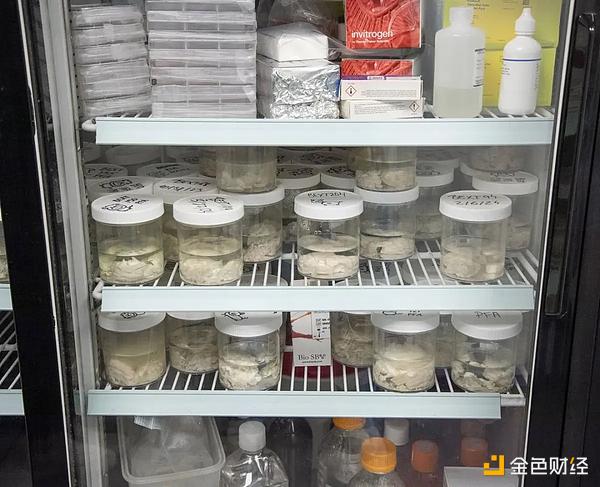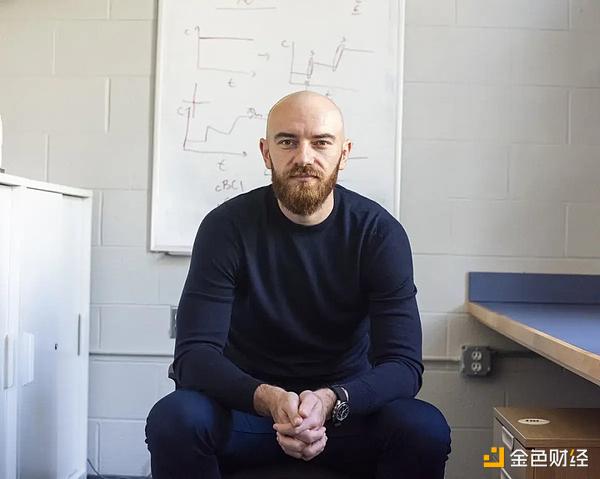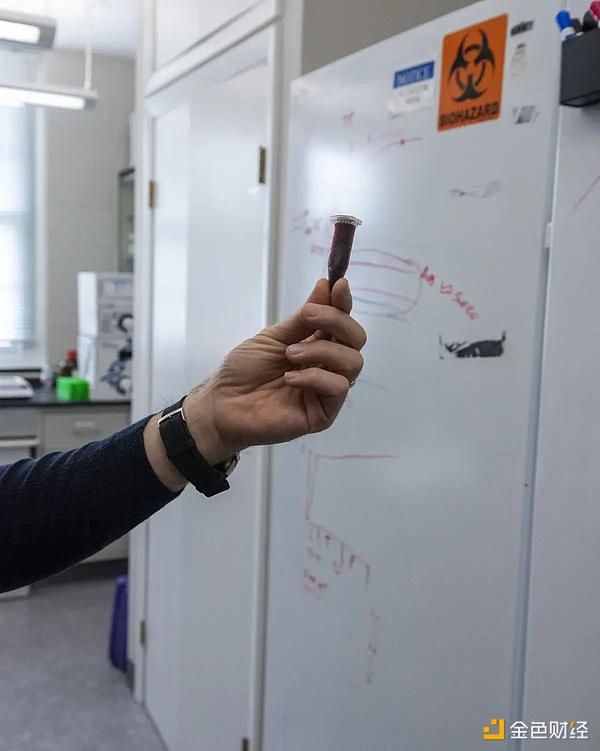By Ashlee Vance, Bloomberg
In early April, James Fickel boarded a train from Boston to New Haven, Connecticut, to examine a batch of animal (pig) brains. The brains were placed in rows of vats in a building on the edge of the Yale University campus, connected to a tangle of tubes and several machines that pumped nutrient-rich fluids into the brains. Researchers have long dreamed of studying brains that can still function outside the body, and this device makes such a dream a reality.

James Fickel. Image source: Bloomberg Businessweek
This path to brain research began a few years ago with the work of Croatian scientists Nenad Sestan and Zvonimir Vrselja. In 2019, they made headlines when they announced that they had restored brain cell activity in pigs for up to four hours after they had been slaughtered at a meat processing plant. Since then, the scientific endeavor has transformed from a research project into a startup called Bexorg Inc. The company hopes that their technology (which also works on donated human brains) will lead to a deeper understanding of the biology of the brain, better medicines, and perhaps sci-fi-style recovery techniques for people who have suffered brain trauma. And Fickel has contributed greatly to this work as an early investor.
Fickel's involvement with Bexorg was an unexpected experience. After a successful career investing in cryptocurrencies, he has quietly become one of the world's largest funders of longevity science and advanced brain research. Fickel has invested more than $200 million in various startups and university research labs, with the goal of extending the healthy lifespan of humans while preparing for coexistence with artificial intelligence. He often invests alongside well-known, deep-pocketed philanthropists such as Bill Gates and Eric Schmidt. This is the first time he has spoken publicly about his work in the field.

Cans of pig brains are stored in a refrigerator at the Bexorg Research Lab in New Haven. Image credit: Bloomberg Businessweek
Fickel’s unusual journey began in 2016, when the 25-year-old Fickel invested all of the $400,000 he earned from his job as a software developer and stock trader into the emerging cryptocurrency Ethereum. At the time, Ethereum was a little-known token trading for about 80 cents. Today, Ethereum has become one of the most household names in crypto assets, with a single coin worth more than $3,000. This investment alone is enough to put Fickel in the ranks of billionaires.
Crypto tycoons are often known for partying in tax havens and chasing the subsequent financial craze. Fickel's only previous appearance in the mainstream media was in 2018, when the New York Times profiled him in an article titled "Everyone Is Getting Very Rich, and You Are Not." He was photographed with his cat Bigglesworth and described as an apostle of the populist digital currency movement. The article also told an anecdote about how Fickel's personal trainer made a fortune by following his trading advice.
Fickel has a good sense of fashion and likes to party occasionally, but he is not like a typical cryptocurrency enthusiast. He is more inclined to the intellectual side of cryptocurrency. He funded academic research into Ethereum’s price swings, including a 2020 paper by Columbia University professor Timothy Roughgarden, a pioneering researcher in algorithmic game theory. The paper played a role in stabilizing Ethereum transaction fees and curbing Ethereum’s inflationary tendencies.
When the coronavirus pandemic hit, Fickel suddenly began to tire of the cryptocurrency industry. In search of a more comfortable place to ride out the pandemic and avoid paying state income taxes, he moved from San Francisco to Austin, Texas, in 2020. “I decided to be a monk for a while, and I read a lot of books,” said Fickel, who is tall, lean, and can be described as a nonchalant futurist. “I’ve been in the cryptocurrency industry for a long time, and now I need to think about something different.”
In Texas, he read the works of longevity gurus such as Nir Barzilai and Aubrey de Grey, then turned to deeper scientific texts and found some well-established researchers who seemed to believe that major breakthroughs in longevity were just around the corner. This was more appealing than many of the new hobbies of cryptocurrency enthusiasts, such as non-fungible tokens (NFTs), which Fickel thought were ridiculous. He decided to become an investor and philanthropist and began emailing startup founders to introduce himself and see if they would be willing to give advice on how to allocate their funds. Unsurprisingly, the founders were happy to receive his emails.
By 2021, Fickel decided to officially devote himself to investment and philanthropy. (Translator's Note: James Fickel is still an active cryptocurrency trading whale, and his on-chain wallet often has large transfers and trading activities.) He founded the Amaranth Foundation and hired Alex Colville, a young student who was then pursuing a doctorate in genetics at Stanford University, as his main investment partner. Together, they began interviewing dozens of researchers and startups and reading a lot of papers. Although Fickel lacked an academic background, he learned very efficiently and was soon able to have in-depth conversations with scientists and evaluate whose work had the most potential.
In Amaranth’s first 18 months, Fickel’s firm put $100 million into startups, 70% of which went to academic moonshots. In all, Amaranth has invested in about 30 companies and research groups. Fickel’s first investments included Cellular Longevity Inc, which has developed a drug that helps dogs live longer; Cyclarity Therapeutics Inc, which is working on therapies to reverse arterial plaque buildup and prevent heart attacks; and LIfT BioSciences, which is developing new cells that can destroy cancerous tumors. Today, he is the biggest backer of age1, a venture capital fund focused on the science of longevity that Colville co-founded with Laura Deming, a well-known investor in the field.
For someone who made his fortune in cryptocurrency, Fickel, perhaps understandably, has a high tolerance for risk that other investors might avoid. His interest in Magic Lifescience, based in Mountain View, California, illustrates this. Founded in 2021, the company uses technology developed over years at Stanford University to build a toaster-sized machine that can diagnose a variety of diseases from small samples of urine, saliva, and blood. Similarities to the infamous diagnostic startup Theranos have posed obvious funding challenges for the company. Those challenges didn’t faze Fickel, who led Magic’s first round of funding.
Early on, the Amaranth Foundation provided grants to people doing meaningful work in the fields of Alzheimer’s disease and mental health, then delved into brain science. In addition to Bexorg, Fickel has funded E11 Bio, an organization developing novel brain-mapping technology, and Forest Neurotech, which makes brain implants that emit ultrasound pulses to study what causes mental health disorders and neurological diseases. One of the foundation’s most recent investments is $30 million to a secretive Stanford University initiative called Project Enigma, which is building an ambitious model of the brain’s structure and describing in detail how each neuron fires throughout the brain.
Fickel said he’s interested in Project Enigma in part because of its potential to create a digital representation of the brain that could help train artificial intelligence systems. Once people have a comprehensive understanding of the mechanics of the human brain, they could use that knowledge to build an artificial brain in digital form and use the data from it, along with artificial intelligence models, to more fully understand how we think and how our values are ingrained. With any luck, this could lead to safer ways for humans and machines to merge in the coming years. “We don’t really know what’s safe and what’s not safe when we transfer capabilities in one dimension or another,” Fickel said. “We need to figure out how to give AI similar values and representations to humans, and tie models to our capabilities until we figure out how to safely engineer more powerful minds.”

Zvonimir Vrselja sits in his lab at Yale University. Image credit: Bloomberg Businessweek
Back at Bexorg, scientist Vrselja is moving between rows of barrels containing brains. Next to him are Fickel and Joanne Peng, who became Amaranth’s new chief of staff after Colville moved on to run age1. Peng, 24, is another biotech wunderkind who took two years off to pursue a Thiel fellowship. While finishing his studies at Princeton, Peng helped Fickel invest his vast fortune.
Vrselja tried to show off all the progress the startup had made since Fickel’s last visit a year ago. “Everything you see—code, hardware, software, fluids, everything—we made,” he said. The technology should enable new ways to test compounds and their effects on the brain by offering pharmaceutical and biotech companies an alternative to human trials. Today, the only way to get humans into drug testing is after years of animal testing, and even then, the process is expensive and arduous. “Developing drugs is hard, and developing drugs for the brain is even harder,” Vrselja said.

Bexorg’s custom-made blood substitute. Image source: Bloomberg Businessweek
With Bexorg’s system, however, brains with diseases like Alzheimer’s and Parkinson’s appear to maintain some functionality. The company says that while cellular activity in these brains continues, the neurons stop firing, so they are not conscious. This is certainly not the same as a clinical trial, but the hope is that testing brains early will save time and money because it will be easier to figure out which ones are worth exploring earlier in the drug development process.
“I’m not a physicist or a neuroscientist,” Fickel says of his investment philosophy. “What I try to do is work with these top scientists to build a mental model at a higher level of abstraction and then drive the changes I want to see in the world.”
 Brian
Brian
 Brian
Brian Alex
Alex Alex
Alex Joy
Joy Brian
Brian Alex
Alex Joy
Joy Edmund
Edmund Joy
Joy Alex
Alex